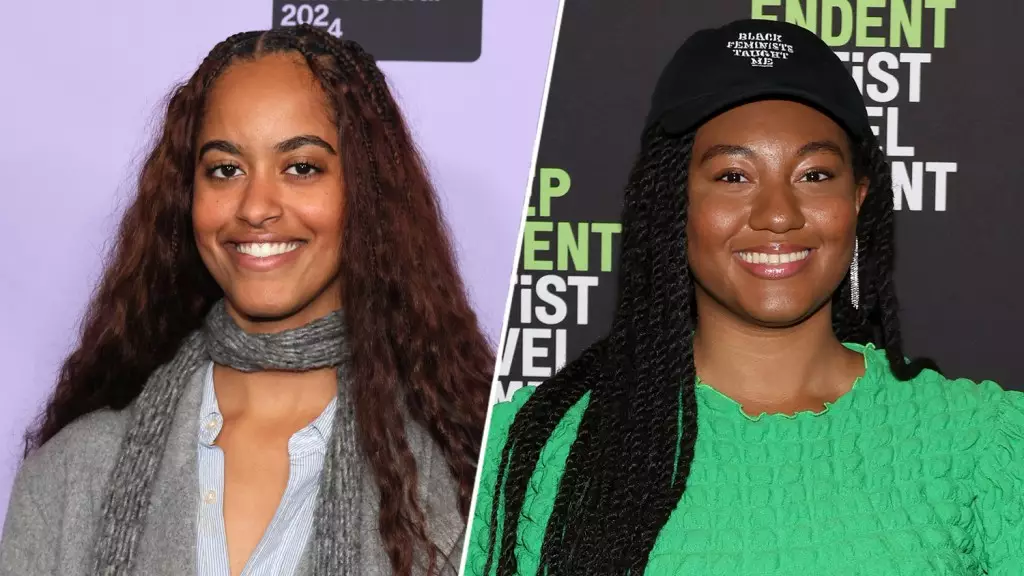In the world of creativity, influence can be a double-edged sword. As Malia Obama is flung into the spotlight following her short film debut, “The Heart,” at the 2024 Sundance Film Festival, she has encountered accusations that threaten to leave an indelible mark on her fledgling career. The critique comes not merely from outsiders but from fellow filmmakers, notably Natalie Jasmine Harris, who expressed deep concern over the apparent similarities between her work, “Grace,” and a recent Nike advertisement featuring WNBA star A’ja Wilson. This scenario raises critical questions about the value of originality and the ethics of inspiration in an industry that should be a breeding ground for innovation.
The Frustration of the Overlooked Artist
Harris’s reaction to the Nike ad was one of initial confusion and then profound disappointment, an emotional trajectory that resonates with many artists who often feel overshadowed by those who wield privilege and name recognition. Harris’s experiences echo a broader plight within the film industry—a system where established figures are favored over emerging talent, which ultimately stifles fresh storytelling. Her words resonate with clarity: “If they wanted these shots that were similar to my shots, why not hire me to direct?” This point is exceptionally powerful, as it raises a fundamental issue about equity in creative fields.
The staggering realization that original creators often go unrecognized is central to this discussion. When a brand like Nike opts for someone with a familiar surname rather than allowing lesser-known but equally passionate voices to flourish, it perpetuates a cycle that marginalizes fresh narratives. The conglomerate might do well to understand that true innovation flourishes in environments where diversity of thought is cultivated, and not merely in the echo chambers of the well-known.
Contrasting Pathways: Influence Vs. Imitation
Critics might hasten to argue that influence is an inseparable part of artistic evolution. Yet, what happens when influence treads into the territory of imitation? For Harris, the similarities in camera angles, framing, and color palettes are not trivial; they are testament to a problematic trend where the work of marginalized creators is subtly appropriated and diluted by more prominent figures. It begs the question: is it enough to simply acknowledge that influence exists without holding those in power accountable for crossing the ever-thinning line into derivative territory?
Moreover, Harris’s sentiment about her experience is reflective of an underlying frustration that many young filmmakers grapple with today. As the industry becomes increasingly commercialized, where are aspiring directors supposed to fit in? The very structure designed to promote original content seems to be dismantling opportunities for the fledgling artists in favor of the established elite.
The Disheartening Silence
Harris has lamented the silence from both Malia Obama and Nike regarding her grievances. This silence, whether born of ignorance or a deliberate choice, amplifies the pain of those who work tirelessly to carve their place in an industry that feels decidedly inhospitable. The unspoken dynamics in play are daunting and suggest that the conversation about intellectual ownership often disappears into obscurity when non-famous names are involved.
In the personal sphere, criticism aimed at Harris for expressing her disappointment betrays a lack of understanding surrounding creative ownership. It’s true that nobody “owns” a game like pat-a-cake, but the method of cinematic depiction—how moments are forged into visual art—is a different matter that creators do claim. Rather than focusing on semantics, it’s vital to recognize that each artist brings a unique perspective and emotional truth to their work, which cannot simply be replicated without consequence.
The Call For Change
Ultimately, Harris’s call for acknowledgment isn’t merely about her film but serves as a rallying cry for systemic change. The narrative she weaves speaks to the struggles of countless underrepresented creators who are sidelined in a world increasingly dominated by the established brand of familiarity. As we dissect this incident, we should contemplate the ramifications of continued silence. What does it mean for future generations of filmmakers?
If we are to foster a creative landscape that values innovation, it requires us to interrogate structures and biases that favor a few at the expense of many. It’s time for both brands and influential individuals—from Obama to Nike—to reassess how they navigate their relationships with emerging artists. Only then can we begin to dismantle the overarching narratives that have led us down a path of imitative shadow, ensuring that original voices are not only heard but celebrated.


Leave a Reply